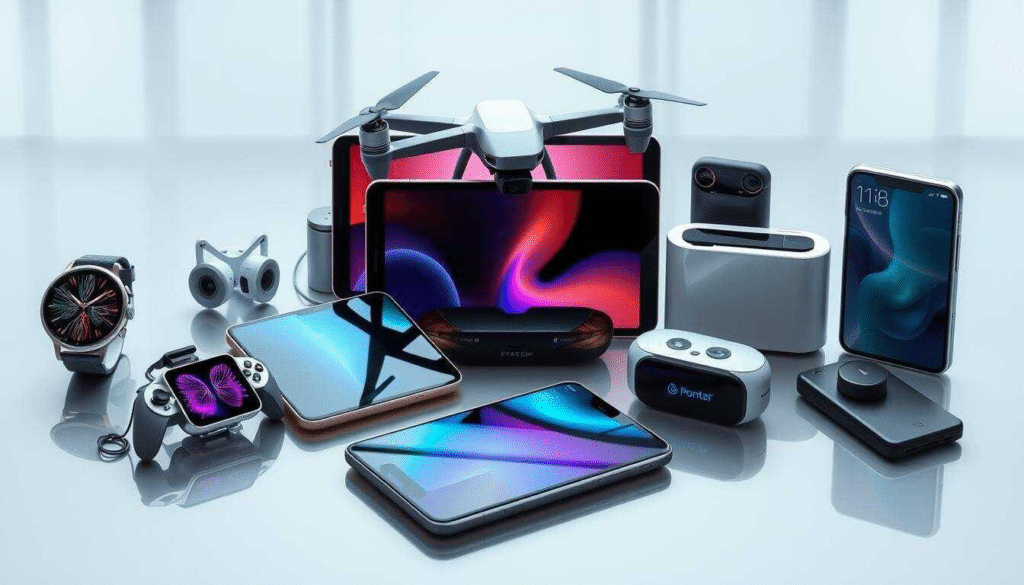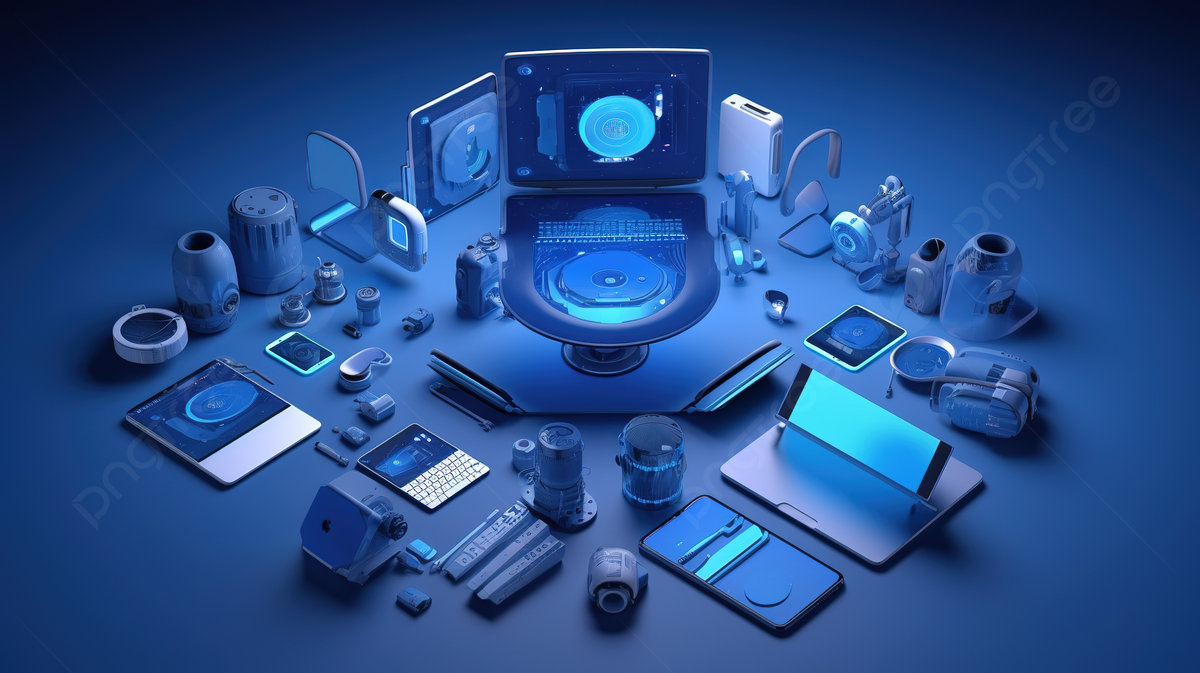In today’s fast-paced digital era, gadgets have become more than just trendy accessories—they are essential tools that define the way we live, work, communicate, and entertain ourselves. From smartphones and smartwatches to wireless earbuds, portable projectors, and home automation devices, gadgets are deeply embedded in every corner of modern life.
As technology continues to evolve, so does the meaning and impact of the word “gadget.” In this article, we’ll explore what defines a gadget, its evolution over time, how it shapes our daily routines, and the trends driving innovation in this field. Whether you are a tech enthusiast, a casual user, or an early adopter, understanding the world of gadgets helps you make informed choices and stay ahead in a constantly shifting landscape.
What is a Gadget?
A gadget can be broadly defined as a small electronic or mechanical device designed for a specific function, often characterized by innovation and convenience. Unlike traditional machines or tools, gadgets are typically portable, user-friendly, and crafted to enhance everyday tasks or provide entertainment.
The term originally referred to quirky or novel contraptions. Today, it encompasses a vast array of devices—everything from cutting-edge smartphones to miniature drones, voice assistants, and fitness trackers.
Gadgets often fall into categories such as:
- Communication devices (e.g., smartphones, smartwatches)
- Entertainment tools (e.g., tablets, portable gaming consoles)
- Health and fitness tech (e.g., smart bands, body composition monitors)
- Productivity enhancers (e.g., smart pens, wireless keyboards)
- Home automation gadgets (e.g., smart plugs, thermostats, cameras)
The Evolution of Gadgets: A Brief History
Gadgets have been part of human innovation for centuries. The early 20th century saw mechanical tools like the pocket calculator, wristwatch, and portable radio capture consumer attention. However, it wasn’t until the digital revolution that gadgets began to transform into the intelligent, interactive devices we use today.
1. The Analog Age
Early gadgets were mechanical in nature. Devices like the wind-up alarm clock, pocket compass, and manual typewriter were all considered innovative in their time. These gadgets were often standalone tools, each serving one specific purpose.
2. The Digital Revolution
The shift from analog to digital brought about a massive transformation in gadget design. The 1970s and 1980s saw the introduction of calculators, personal computers, and video game consoles. Sony’s Walkman redefined portable entertainment, and the first mobile phones signaled the dawn of a new communication era.
3. The Smartphone Era
The release of the iPhone in 2007 marked a turning point. Smartphones became the ultimate all-in-one gadget, integrating calling, texting, browsing, photography, gaming, and productivity into a single device. This led to an explosion in app-based services and new kinds of gadgets designed to complement or expand smartphone capabilities.
4. The Smart Everything Era
Today’s gadgets are increasingly interconnected, smart, and powered by artificial intelligence. Voice assistants like Amazon Alexa and Google Assistant integrate with a range of smart home devices. Wearables monitor health metrics in real time. Smart TVs, robotic vacuum cleaners, and even smart kitchen appliances are turning homes into intelligent ecosystems.
How Gadgets Impact Daily Life
Gadgets are no longer optional add-ons—they’re integral to daily living. Below are key areas where they have a profound impact:
1. Communication
Smartphones, smartwatches, wireless earbuds, and messaging apps have revolutionized the way we connect. Whether it’s instant messaging, video conferencing, or social networking, gadgets keep us in constant contact with the world.
2. Productivity
Laptops, tablets, digital planners, and noise-canceling headphones help users stay productive regardless of their location. Remote work and digital collaboration tools, powered by these gadgets, have redefined traditional office environments.
3. Health and Fitness
Gadgets like fitness trackers, heart rate monitors, smart scales, and sleep trackers allow users to monitor their physical well-being and make data-driven decisions about their lifestyle. Some devices now offer ECG readings, blood oxygen monitoring, and AI-powered coaching.
4. Entertainment
Streaming devices, VR headsets, gaming consoles, and e-readers provide immersive and portable entertainment options. The rise of platforms like Netflix, Spotify, and YouTube has further amplified the demand for high-quality, mobile entertainment gadgets.
5. Home Automation
Smart home gadgets—such as thermostats, lighting systems, security cameras, and robotic cleaners—enhance convenience and security. These devices often integrate with ecosystems like Google Home or Amazon Alexa to offer voice-controlled automation.
6. Travel and Mobility
GPS devices, wireless chargers, portable Wi-Fi hotspots, action cameras, and compact drones cater to travelers and content creators on the go. Gadgets designed for travel often emphasize portability, durability, and multifunctionality.
Trending Gadget Categories in 2025

As we move deeper into the decade, several categories of gadgets are emerging or maturing rapidly. These represent both where consumer interest lies and where manufacturers are focusing their innovations.
1. AI-Driven Devices
Artificial intelligence is now embedded in everything from phones to toasters. Gadgets use AI to improve performance, personalize experiences, and automate tasks. For example, AI-powered cameras can optimize photography settings in real time, while smart thermostats learn user behavior to save energy.
2. Wearable Technology
Wearables have expanded far beyond fitness bands. Smartwatches now support contactless payments, ECG monitoring, and emergency SOS features. Smart rings, AR glasses, and wearable ECG patches are also gaining popularity, especially in healthcare and productivity spaces.
3. Eco-Friendly Gadgets
Sustainability is a major trend in 2025. Solar-powered chargers, energy-efficient appliances, biodegradable phone cases, and modular gadgets that allow repairs or upgrades are increasingly in demand. Consumers are choosing devices that align with environmental values.
4. Foldable and Flexible Tech
Foldable smartphones, rollable displays, and bendable tablets represent the future of form factor innovation. Devices like the Samsung Galaxy Z Fold series have shown the potential of merging portability with multitasking power.
5. Gaming Gadgets
The gaming industry continues to thrive, with gadgets like handheld consoles, wireless controllers, gaming headsets, and performance-optimized smartphones becoming mainstream. Cloud gaming services have also introduced gadgets specifically tailored for low-latency, high-performance streaming.
6. Personal Safety Devices
Miniature GPS trackers, smart pepper sprays, wearable panic buttons, and child-tracking watches are part of a growing market for personal security gadgets. These tools offer peace of mind and real-time alerts for individuals and families.
What Makes a Great Gadget?
Not all gadgets are created equal. While some enjoy viral success, others fade into obscurity. The best gadgets share common traits:
- Utility: Solves a real problem or meets a specific need
- Design: Intuitive, aesthetically pleasing, and user-friendly
- Portability: Easy to carry or integrate into daily life
- Durability: Built to last, even with frequent use
- Innovation: Offers something new or improves significantly on existing solutions
- Integration: Compatible with other devices and platforms
Gadget reviews and comparisons play a crucial role in helping consumers distinguish between gimmicky features and meaningful innovations.
Popular Gadgets in 2025
While the gadget landscape is always changing, a few standout categories have taken center stage this year:
- Smartphones with AI-enhanced cameras and satellite connectivity
- Noise-canceling wireless earbuds with real-time translation
- Portable projectors for home cinema and mobile presentations
- Smart home hubs that unify multiple device brands
- Health wearables capable of tracking hydration, stress, and recovery
- Electric scooters and foldable e-bikes for urban commuting
These devices not only meet practical needs but often become part of a person’s identity and lifestyle.
The Role of Gadgets in Education and Work
Gadgets have redefined both education and the workplace. Students use tablets for interactive learning, digital whiteboards have replaced traditional chalkboards, and virtual classrooms are powered by webcams, microphones, and collaboration software.
For professionals, gadgets like multi-monitor setups, wireless presentation tools, and AI-enhanced transcription devices have transformed how work is conducted. Hybrid work models rely heavily on gadgets to bridge the physical and digital divide.
Challenges in the Gadget Industry
Despite its rapid growth, the gadget industry faces significant challenges:
1. E-Waste
As consumers upgrade frequently, electronic waste becomes a major issue. Manufacturers are under pressure to design gadgets that are recyclable, modular, or upgradable.
2. Privacy and Security
Smart gadgets often collect personal data, leading to concerns over how that information is stored and used. Security breaches can expose sensitive data, while some gadgets have been criticized for invasive tracking.
3. Overconsumption
With constant releases and updates, there is a cultural push toward overconsumption. Users often feel the need to own the latest devices even if their current ones are functioning perfectly.
4. Compatibility
Interoperability remains a concern as not all gadgets play nicely together. This is especially problematic in smart homes where multiple brands may compete rather than collaborate.
Future Outlook: What’s Next for Gadgets?
Looking ahead, several developments are set to shape the next generation of gadgets:
- Neural interfaces that allow users to control devices with their thoughts
- Quantum-enhanced sensors for ultra-precise measurements in health and science
- Bio-integrated wearables for continuous internal monitoring
- Swarm robotics where small gadgets work in coordinated groups
- Ambient computing, where gadgets disappear into the environment and respond contextually
While some of these ideas are still experimental, the speed of innovation suggests they may become reality sooner than expected.
Final Thoughts
Gadgets are no longer niche novelties—they are foundational to how we engage with the world. As technology becomes more sophisticated, gadgets will continue to blur the line between utility and experience, between physical and digital.
Whether enhancing productivity, improving health, or simply entertaining, the role of gadgets will only expand in significance. For users, the key is to embrace innovation thoughtfully—selecting devices that add real value and contribute positively to daily life.
At Tech Thrilled, we remain committed to exploring these emerging technologies, reviewing the latest gadgets, and providing insights that help our readers stay informed, empowered, and ahead of the curve.
